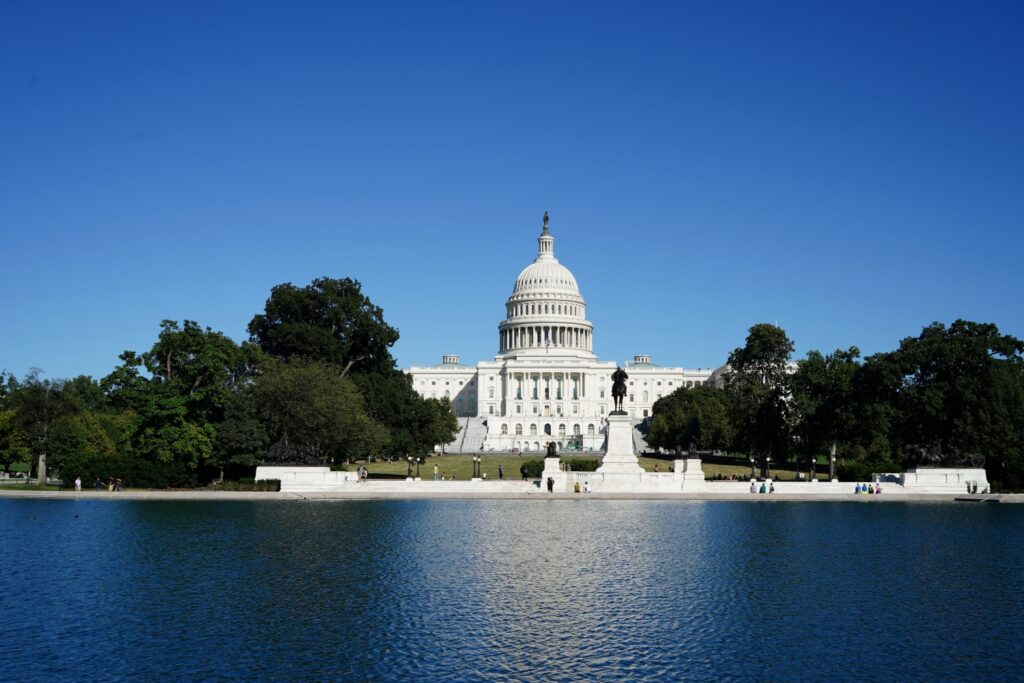Abstract
The Age-Friendly Ecosystem (AFE) movement has gained global momentum, reflecting the demographic shift toward an older population. This article describes the movement’s historical development and examines key components of an AFE and the critical importance of cross-sector collaboration in pursuit of its full potential. The article suggests that creating an Age-Friendly Ecosystem is essential for the well-being of older adults and that the success of multi-sectoral collaborations that define a well-functioning AFE requires a commitment to cooperation and shared understanding.
Key Words
Age-Friendly Ecosystem, cross-sector collaboration, older adult well-being, age-friendly care, age-friendly impact, age-inclusive planning, partnerships
Globally, significant demographic changes are underway. The proportion of older adults is increasing remarkably, bringing about a more diverse society, integral to all aspects of life. One of the most profound benefits of this shift is enhanced longevity. With longer lifespans, individuals can enjoy more precious time with loved ones and engage in activities that bring joy and fulfillment.
This additional time should not merely be about living longer but instead enriching the years with meaningful experiences, strengthening community ties, and improving overall quality of life. One of the most exciting aspects of this demographic shift is the economic dividend it generates. Currently, the ages 50 and older population contributes $45 trillion to the global economy, and by 2050, this contribution is expected to soar to $118 trillion. This surge in economic activity is driven by the spending power of the global ages-50-and-older population, which in turn creates more jobs and stimulates more economic growth.
The growth of the older adult population also has prompted governments, non-governmental organizations, and communities worldwide to rethink how societies accommodate older adults. In response to this challenge, the Age-Friendly Ecosystem (AFE) movement has emerged, advocating for environments that support active aging, ensure accessibility, and improve quality of life for older adults. This article offers an overview of the AFE movement, exploring its historical origins, key components, evaluation measures, and the critical need for cross-sector collaboration to enhance the well-being of older adults.
Historical Development of the Age-Friendly Ecosystem Movement
Early Concepts of Aging and Environment
The relationship between aging and the environment has been explored since ancient times, with philosophers and scholars contemplating the impact of surroundings on the health and longevity of older adults. Cicero wrote about how to grow old in his essay, “On Old Age,” in 40 BC, suggesting that cultivating a calm and reasonable life from the time you are young was a good way to ensure a successful old age [Cicero, ca. 40 B. C. E./2016]. The theme of aging well and good care for older people has been a constant throughout history.
The field of gerontology emerged in the early 20th century, focusing on the study of aging processes and the challenges older adults face. However, it wasn’t until the latter half of the 20th century that the concept of an “age-friendly” environment began to take shape. The 1960s and 1970s saw the rise of the environmental gerontology movement, which emphasized the importance of physical and social environments in the aging process.
‘Affordable, accessible, and adaptable housing options allow older adults to age in place.’
Researchers like Lawton and Nahemow (1973) introduced the concept of “person-environment fit,” which suggested the well-being of older adults depended upon the compatibility between their abilities and the demands of their environment.
This idea laid the groundwork for future developments in the age-friendly ecosystem effort, in which an ecosystem is defined as a complex network or interconnected system [Oxford English Dictionary, 2023].
Why is this essential? A community (city, town, state, or nation) cannot call itself “age-friendly” if its residents lack access to age-friendly public health services, age-friendly healthcare, or the other elements that make up an Age-Friendly Ecosystem. Collectively, these sectors create an environment conducive to healthy aging and an optimal quality of life for older adults.
Emergence of the Age-Friendly Cities and Communities (AFCC) Initiative
The Age-Friendly Cities and Communities (AFCC) initiative, launched in 2007 by the World Health Organization (WHO), marked a significant milestone in the AFE movement. This global initiative was a response to the growing recognition that cities and communities needed to adapt to accommodate the needs of an older population (Fulmer et al., 2020.
The AFCC framework identified eight domains that contribute to the age-friendliness of a community, including outdoor spaces, transportation, housing, social participation, respect and social inclusion, civic participation, communication and information, community support, and health services.
The AFCC initiative catalyzed the global movement toward age-friendly environments, with cities and communities worldwide adopting the framework and tailoring it to their unique contexts. The success of the AFCC initiative inspired age-friendly frameworks expansion beyond cities and communities to include a broader ecosystem of practitioners, such as public health officials, community health workers, educators, providers, and stakeholders, paving the way for a more comprehensive and holistic approach now referred to as the Age-Friendly Ecosystem.
The Imperative of the Broader Ecosystem Approach
The AFE movement has evolved from focusing on individual cities and communities to a broader ecosystem approach that recognizes the interconnectedness of various factors influencing the well-being of older adults. This shift has been driven by the realization that age-friendly ecosystems (environments) cannot be created in isolation; instead, they require multiple sectors to collaborate, including healthcare, social services, workplaces, and technology [Dash et al., 2021; Fulmer et al., 2020].
Complementing existing health-promoting programs ensures they meet the needs of older adults.
The John A. Hartford Foundation provides a website with definitions, shared characteristics (or ways of describing), and selected measures that can be found across all sectors of the AFE: https://www.johnahartford.org/grants-strategy/current-strategies/age-friendly.
Trust for America’s Health (TFAH) is working with The John A. Hartford Foundation (JAHF) to strategically align all sectors of the Age-Friendly Ecosystem. Through national convenings and calls, sectors of the ecosystem are beginning to understand their roles, define what it means to be an age-friendly society, and align goals for achieving it (see https://afphs.org/whats-public-health-got-to-do-with-academic-partners-and-the-age-friendly-ecosystem/).
At the state level, for example, the Mississippi Public Health Association is cultivating internal and external partnerships to develop an ecosystem approach for a statewide plan aimed at better understanding the needs of older adults and prioritizing healthy aging. Additional AFE resources can be found on the TFAH website (https://afphs.org/ecosystem/). Early findings from the AFE initiative highlight the importance of all sectors to understand the impact of ageism, the importance of partnerships, and the necessity to view all local, state, and national plans and actions through the lens of healthy aging.
Fundamentals of a Successful Age-Friendly Ecosystem
Across AFE sectors, multiple interrelated fundamentals, if implemented well, can play a vital role in creating environments that support older adults’ health and well-being. These six fundamental elements make up the age-friendly infrastructure and include: lived (physical community), social, healthcare systems, public health systems, technology, and policy systems.
The community’s physical infrastructure refers to its built environment, including housing, transportation, and public spaces. Age-friendly community infrastructure is designed to be accessible, safe, and conducive to active aging. Key aspects of age-friendly physical infrastructure include:
- Housing: Affordable, accessible, and adaptable housing options allow older adults to age in place.
- Transportation: Accessible and affordable transportation options enable older adults to maintain independence and social connections.
- Public Spaces: Safe, accessible, and well-maintained public spaces encourage physical activity and social interaction.
Social Infrastructure
Social infrastructure encompasses social relationships, networks, and support systems essential for older adult well-being. Since the passage of the Older Americans Act in 1965, the 622 Area Agencies on Aging have been providing key social supports and services that define the age-friendly social infrastructure. These include:
- Social Participation: Opportunities for older adults to engage in social, cultural, and recreational activities that foster a sense of belonging and purpose.
- Respect and Social Inclusion: Practices and policies that promote including and respecting older adults in all aspects of community life.
- Engagement with the Higher Education System: Taking advantage of college campuses as places for lifelong learning and social connectivity. Age-Friendly Universities commit to 10 guiding principles (see https://www.afugn.org/).
- Civic Participation and Employment: Opportunities for older adults to contribute to society through volunteering, employment, and civic engagement.
Healthcare Systems
Healthcare systems play a critical role in supporting the health and well-being of older adults. An Age-Friendly Health System, AFHS, is accessible, affordable, and responsive to the needs of older adults [Fulmer & Berman, 2016; Mate et al., 2018]. Age-friendly care ensures all older adults receive reliable, evidence-based care that causes no harm and responds to their goals and preferences.
- 4Ms: what matters, mentation, medication, and mobility. Much has been written since the age-friendly health system effort began in 2016 with the Institute for Healthcare Improvement (IHI), and to date, more than 5,000 care locations have committed to and demonstrated measurable change by engaging in the AFHS movement. The Veterans Health System is a key example of such a health system [Church et al., 2023].
Age-friendly care can and should be instituted in every care setting. This includes:
- Primary Care: Accessible and comprehensive primary care services, nonprofit and for-profit, which address the health needs of older adults.
- Specialty Clinics: Healthcare services for specific complex care such as cardiac, cancer, pulmonary, and orthopedic clinics, as well as hospitals.
- Acute Care: An acute care hospital provides short-term care for acute medical needs, such as injuries, illnesses, diseases, or surgeries.
- Retail Clinics: Convenient, accessible healthcare services provided in retail settings.
- Long-Term Care: Includes home care, assisted living, and nursing homes, which provide appropriate levels of care and support.
- Community Care Sites: Includes federally qualified health centers, homeless shelters and clinics, and prisons.
Public Health Systems
Public health is the science of protecting and improving population health, such as in neighborhoods, cities, countries, or regions, and includes disease prevention, healthy lifestyles, environmental factors, health disparities, safety standards, and school nutrition.
The Age-Friendly Public Health System, AFPHS, movement is a critical component of the AFE and speaks to the vital influence that preventive care and population health have on the ability of older adults to age well in their communities. The role of public health and community health workers cannot be overstated, and a major overhaul, including financing, of the public health system infrastructure is long overdue. The 6 Cs of AFPHS form a cohesive framework with other concepts of the AFE [DeBiasi et al., 2020; Wolfe & Gracia, 2023]. The 6 Cs are:
- Creating and leading policy, systems, and environmental changes to improve older adult health and well-being.
- Connecting and convening multisector stakeholders to address the health and social needs of older adults through collective impact approaches.
- Coordinating support and services to help older adults, families, and caregivers navigate and access such help, avoid duplication and promote an integrated system of care.
- Collecting, analyzing, and translating relevant and robust data on older adults to identify the needs and assets of a community and inform intervention development through community-wide assessment.
- Communicating important public health information to promote and support older adult health and well-being, including conducting and disseminating research findings and emerging best practices to support healthy aging.
- Complementing existing health-promoting programs to ensure they adequately meet the needs of older adults.
Technology
Technological innovation could potentially enhance the impact of collaborative efforts from across the AFE on the quality of life for older adults by improving access to information, services, and social connections. Age-friendly technology includes:
- Assistive technologies: Devices and tools that support the independence and safety of older adults, such as mobility aids, hearing aids, and smart home technologies.
- Digital inclusion: Efforts to ensure older adults have access to and can use digital technologies, such as the Internet and mobile devices.
- Telehealth: The use of technology to deliver healthcare services remotely, improving access to care for older adults in rural or underserved areas.
Policy Frameworks
Policy frameworks provide the foundation for developing and implementing sustainable, age-friendly initiatives. Age-friendly policies promote the health, well-being, and inclusion of older adults. Key elements of age-friendly policy frameworks include:
- Age-Inclusive Planning: Integrating aging considerations into urban planning, transportation, housing, and other policy areas, such as national and state plans for aging (see https://www.giaging.org/network/funders-communities/multisector-plans-for-aging).
o A multisector plan for aging is an umbrella term for a state-led, multiyear planning process that convenes cross-sector stakeholders to collaboratively address the needs of older adults and people with disabilities. States use a variety of names for these plans (e.g., master plans, multisector plans, strategic plans, and aging-well plans), but all have the same broad goals.
o The U.S. Department of Health and Human Services, through its Administration for Community Living [2024], released “Aging in the United States: A Strategic Framework for a National Plan on Aging.” The report lays the groundwork for a coordinated effort—across private and public sectors and in partnership with older adults, family caregivers, the aging services network, plus other stakeholders—to create a national set of recommendations to advance healthy aging. The national plan on aging will advance best practices for service delivery, support development and strengthening of partnerships in and across sectors, identify solutions for removing barriers to health and independence for older adults, and more. Developed by leaders and experts from 16 federal agencies and departments working together through the Interagency Coordinating Committee (ICC) on Healthy Aging and Age-Friendly Communities, the report also reflects input from community partners and leaders in the aging services network.
- Intergenerational Solidarity: Policies that promote intergenerational relationships and resource-sharing between different age groups.
- Human Rights of Older Adults: The protection and promotion of the rights of older adults, including the right to autonomy, dignity, and participation in society.
Measures for Evaluating the Age-Friendly Ecosystem
Evaluating an AFE’s effectiveness is essential for ensuring it meets the needs of older adults and contributes to their well-being. Measures and indicators have been developed to assess the age-friendliness of environments, and these continue to be developed and explored. For example, AARP conducts an annual survey. “What do residents think about where they live, how they live—and how they want to live?” and JAHF supports research and evaluation on the impact of the 4Ms. Measurement methods include:
- Qualitative measures provide in-depth insights into the experiences and perceptions of older adults regarding the age-friendliness of their environments. These measures may include focus groups, case studies, and participatory research.
- Quantitative measures may include surveys, metrics for assessing services like public transportation, and data on health outcomes.
- Mixed-methods approaches combine qualitative and quantitative measures to provide a comprehensive assessment of the age-friendliness of environments and can offer a more nuanced understanding of factors that support or hinder age-friendliness.
The Importance of Cross-Collaboration in the Age-Friendly Ecosystem
The success of the AFE movement depends on the collaboration of multiple sectors and partners. Cross-collaboration is essential for addressing the complex and interconnected challenges older adults face and creating environments that support healthy aging.
Interdisciplinary collaboration involves integrating knowledge and expertise from different fields, such as urban planning, healthcare, social work, and technology. This collaboration is crucial for developing comprehensive solutions that address the diverse needs of older adults. Collaborating with urban planners and designers to create accessible and age-friendly physical environments is a promising approach to putting suitable structures in place for healthy aging.
‘Evaluating an AFE’s effectiveness is essential for ensuring it meets the needs of older adults and contributes to their well-being.’
Further, the coordination of healthcare and social services to provide holistic care and support, thereby creating a seamless experience for the care required is what older people want and need. For instance, through funding from The John A. Hartford Foundation, Area Agencies on Aging (AAAs) are encouraged to form partnerships with health systems. According to the 2023 survey [JAHF, 2024], about 50% of AAAs reported having one or more contracts with health systems and payers, a significant increase from 9 years ago, when it was around 13%.
In 2023, more than 350,000 individuals were served through these contracts, with 85% of AAAs reporting their contracts targeted high-risk or high-need groups [JAHF, 2024]. These groups are those at risk of nursing home placement and avoidable hospital use. Additionally, 47% of AAAs with contracts reported a positive net revenue impact, marking a 21% increase from 2020 [JAHF, 2024]. This positive financial outcome demonstrates the value and effectiveness of such partnerships and speaks to the further potential of all age-friendly sectors partnering and realizing operational and financial gains that could come when working together.
What Does the Future Hold for an Age-Friendly Ecosystem?
The exciting momentum underway reflects our shared commitment to creating the best possible environment for everyone as we age, ensuring we can all thrive and live our fullest lives. The longevity dividend can only be fully realized when there is an objective understanding among the ecosystem’s various elements regarding what we mean by the term age-friendly, how it is measured, and how it relates to all the components described here.
This is a pivotal moment where all of us are devoted to amplifying one another’s message and learning from one another to ensure older adults live in and benefit from a strategic framework ecosystem where they can flourish. Working together and sharing our values, definitions, strategies, and measures will ensure a truly age-friendly future in which the term has meaning and impact.
Terry Fulmer, PhD, RN, FAAN, is president, and Jane Carmody, DNP, MBA, RN, FAAN, is senior program officer at The John A. Hartford Foundation. Catelyn Edwards is an MPH candidate at Columbia University’s Health & Aging Program and an intern at The John A. Hartford Foundation.
Photo credit: Shutterstock/Daniel Myjones
References
Administration for Community Living. (2024). Aging in the United States: A strategic framework for a national plan on aging. United States Department of Health and Human Services. https://acl.gov/sites/default/files/ICC-Aging/StrategicFramework-NationalPlanOnAging-2024.pdf
Church, K., Munro, S., Shaughnessy, M., & Clancy, C. (2023). Age-friendly health systems: Improving care for older adults in the Veterans Health Administration. Health Services Research 58(Suppl 1): 5-8. https://doi.org/10.1111/1475-6773.14110
Cicero, M. T. (2016). How to Grow Old: Ancient wisdom for the second half of life. (P. Freeman, Trans.). Princeton University Press. (Original work published ca. 40 B. C. E.)
Dash, K., Shue, J. Driver, T., Bonner, A., Pelton, L., Snyder, R., Diep, A., Espinosa, S., & Fulmer, T. (2021). Developing a shared language to describe the age-friendly ecosystem. International Journal or Geriatric Gerontology 6(134). https://institute.agefriendly.com/developing-a-shared-language-to-describe-the-age-friendly-ecosystem-technical-meeting-report/
De Biasi, A., Wolfe, M., Carmody, J., Fulmer, T., & Auerbach, J. (2020). Creating an age-friendly public health system. Innovation in Aging, 4(1), igz044. https://doi.org/10.1093/geroni/igz044
Fulmer, T., & Berman, A. (2016). Age-friendly health systems: How do we get there? [Blog post]. Health Affairs. http://healthaffairs.org/blog/2016/11/03/age-friendly-health-systems-how-do-we-get-there/
Fulmer, T., Patel, P., Levy, N., Mate, K., Berman, L., Pelton, L., Beard, J., Kalache, A., & Auerbach, J. (2020). Moving toward a global age-friendly ecosystem. Journal of the American Geriatric Society, 68(9), 1936-1940. https://doi.org/10.1111/jgs.16675
JAHF. (2024). Aging and Disability Business Institute 2023 CBO-Health Care Contracting Survey: New Resources. https://www.johnahartford.org/resources/view/aging-and-disability-business-institute-2023-cbo-health-care-contracting-survey-new-resources
Lawton, M. P., & Nahemow, L. (1973). Ecology and the aging process. In C. Eisdorfer, & M. P. Lawton (Eds.), The psychology of adult development and aging, (pp. 619-674). American Psychological Association. https://doi.org/10.1037/10044-020
Mate, K. S., Berman, A., Laderman, M., Kabcenell, A., & Fulmer, T. (2018). Creating age-friendly health systems—A vision for better care of older adults. Healthcare, 6(1), 4-6. https://doi.org/10.1016/j.hjdsi.2017.05.005
Oxford English Dictionary. (2023, July). Ecosystem. https://doi.org/10.1093/OED/4710651519
Wolfe, M. and Gracia, J. N. (2023). The value of age-friendly public health systems in the age-friendly ecosystem. Geriatrics (Basel), 8(3)63. https://pmc.ncbi.nlm.nih.gov/articles/PMC10297863/













